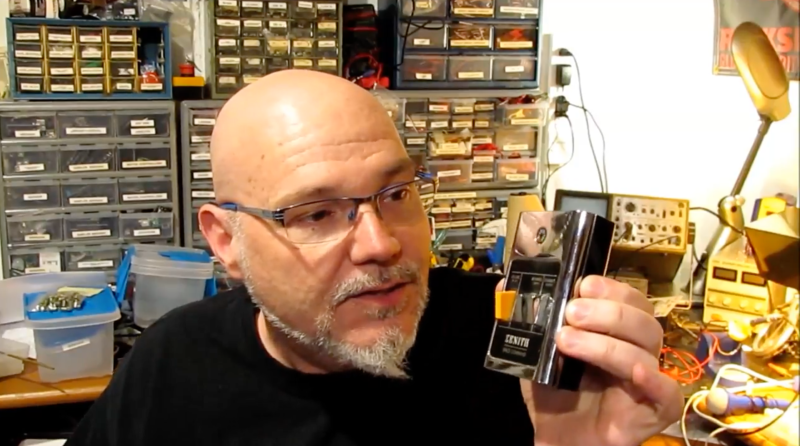Anyone with grandparents already knows that in ye olden days, televisions did not have remote control. Your parents probably still complain about how, as children, they were forced to physically walk over to the TV in order to switch between the three available channels. In these modern times of technological wonder, we have voice control, programmable touch screen remotes, and streaming services that will automatically play an entire season of the show you’re binge watching. However, before these, and before the ubiquitous infrared remote, television manufacturers were experimenting with ways to keep kids from having to run across the living room every time the channel needed to be changed.
Early remote controls were simply wired affairs — nothing too surprising there. But, it wasn’t long before methods of wireless control were being introduced. One early effort called the Flashmatic would shine light onto a photoelectric cell on the television set to control it. Of course, it might also be controlled by unintended light sources, and users had to have good aim to hit the sensor. These issues soon led to the introduction of the Zenith Space Command remote control, which used ultrasonic frequencies to control the TV.
What is particularly interesting about the Zenith Space Command was that it was completely mechanical, and contained no electronics whatsoever. There were no batteries to change, and because it used ultrasonic sound, it didn’t need to be pointed directly at the television set. Robert Adler, the Zenith engineer who designed the Space Command, achieved this by using physical buttons which triggered spring-loaded hammers to hit metal rods tuned to the necessary frequencies. This created a distinctive click (hence the term “clicker”), sounded the proper ultrasonic frequency, and a circuit in the television set would respond by changing the channel.
In the video below, [Monta Elkins] breaks down a vintage Zenith Space Command to show us how the internal mechanisms work. Then, he takes it a few steps further and demonstrates how he built a system to respond to the remote control. Using a Teensy, an Arduino Uno, and a bit of speech synthesis, the system gets triggered by the Space Command and then speaks a command, which is then registered by an Amazon Alexa.
Want to learn more about the all-powerful remote control? Then you’ll first want to answer the question: how old is the remote?
















Oh, very nice hack, but can you get all 7 combinations decoded? And yeah you can still get 4 button ones, even if they are a bit crusty so that would be 15 different outputs if you treat it like a chorded keyboard.
https://en.wikipedia.org/wiki/Chorded_keyboard
Do it with a Magnavox Phantom remote. The second version that used bellows and nearly silent whistles, not the original that used radio frequencies. Looks like it used AM, has a wire wound ferrite rod inside.
Aside from never getting mentioned in articles on the history of the TV remote, there are as yet no images online of the insides of the later type Magnavox Phantom remote, nor can I find anything about the receiver part in the televisions.
There’s a few pics of the inside of the electronic model, but nothing about how it worked.
Despite all the RARE!!!! eBay auctions for both types, they’re not all that rare. Someone had (past tense) an original shipping box full of the electronic ones, new old stock.
My great grandfather actually made the Magnavox Phantom Remote. Him and the Magnavox guy were best friends
DSO by Digital camera LOL LOL
I got a ‘clicker’ remote autographed by Robert Adler before he died…
That’s the definition of an Alexa “skill”.
All the old ultrasonic remotes I seen in person had four buttons.
My Grandparents had these Zenith remotes in the 80’s. A pocket full of change with keys would change the channel.
Woot! Go stuff Monta!
Erm, good stuff that one